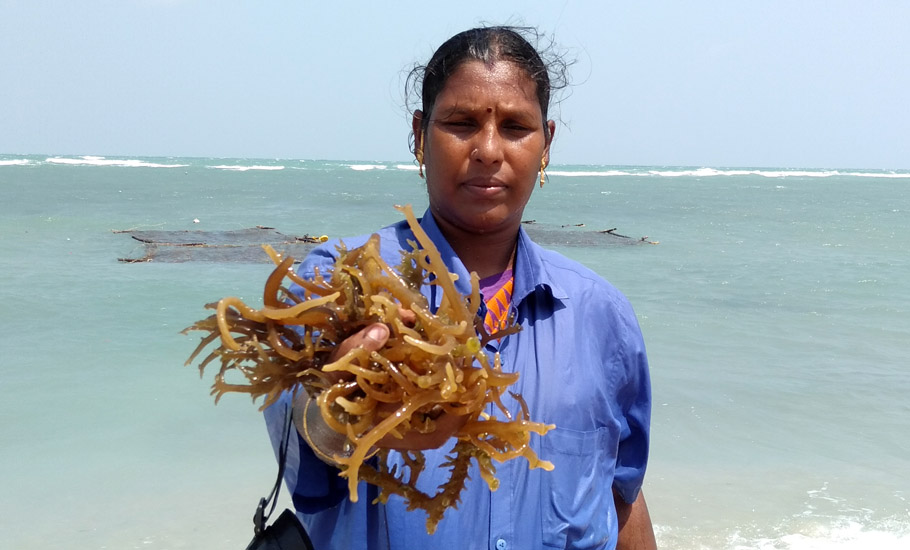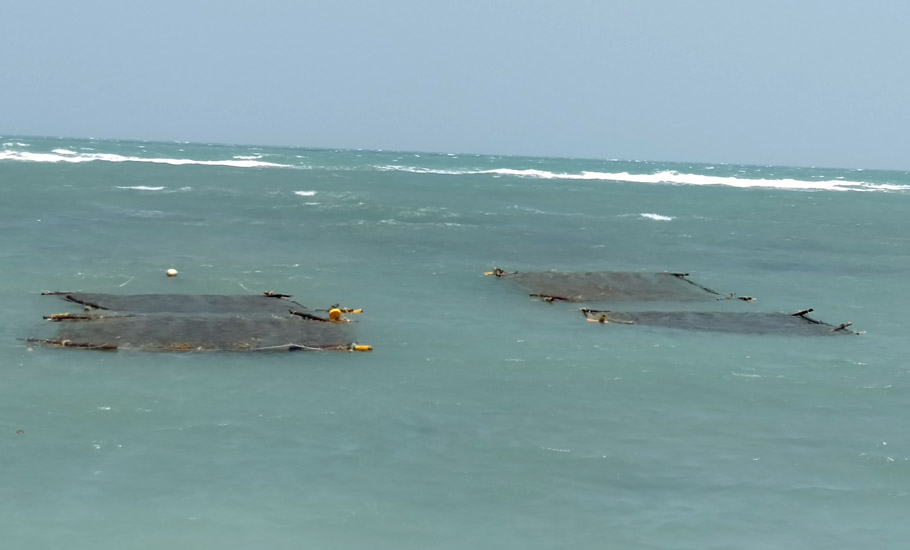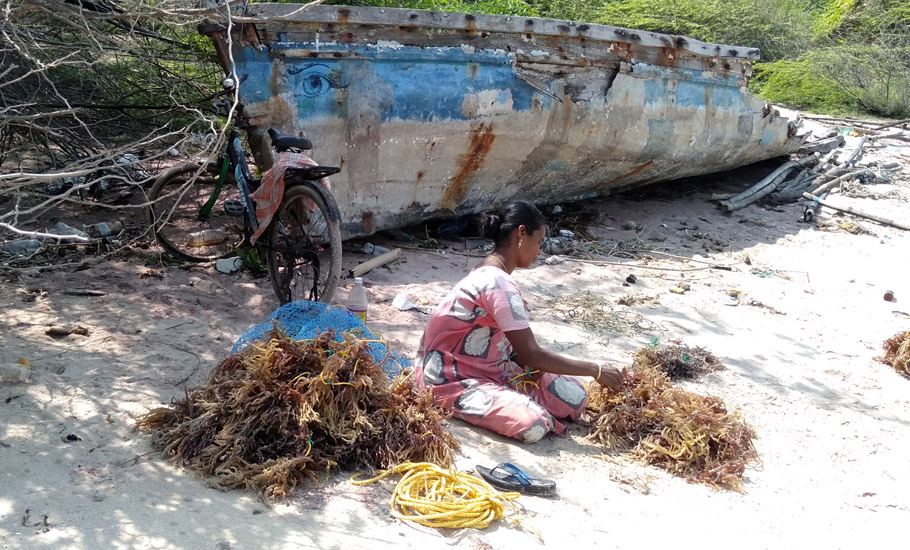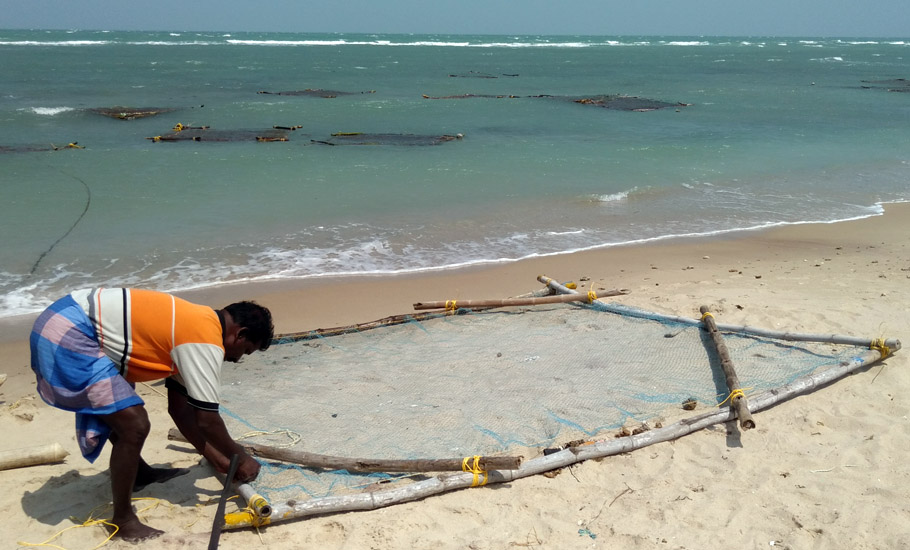
- Home
- India
- World
- Premium
- THE FEDERAL SPECIAL
- Analysis
- States
- Perspective
- Videos
- Sports
- Education
- Entertainment
- Elections
- Features
- Health
- Business
- Series
- In memoriam: Sheikh Mujibur Rahman
- Bishnoi's Men
- NEET TANGLE
- Economy Series
- Earth Day
- Kashmir’s Frozen Turbulence
- India@75
- The legend of Ramjanmabhoomi
- Liberalisation@30
- How to tame a dragon
- Celebrating biodiversity
- Farm Matters
- 50 days of solitude
- Bringing Migrants Home
- Budget 2020
- Jharkhand Votes
- The Federal Investigates
- The Federal Impact
- Vanishing Sand
- Gandhi @ 150
- Andhra Today
- Field report
- Operation Gulmarg
- Pandemic @1 Mn in India
- The Federal Year-End
- The Zero Year
- Science
- Brand studio
- Newsletter
- Elections 2024
- Events
- Home
- IndiaIndia
- World
- Analysis
- StatesStates
- PerspectivePerspective
- VideosVideos
- Sports
- Education
- Entertainment
- ElectionsElections
- Features
- Health
- BusinessBusiness
- Premium
- Loading...
Premium - Events

Seaweed farming: In TN, women divers finally hope to turn the tide

For seaweed farmer Suganthy, work from home is not an option. But the travel to her workplace is a long ordeal taking about 2-3 hours. From her house in Pamban in Rameswaram taluk of Ramanathapuram district in southern coastal Tamil Nadu, she has to catch a bus to Rameswaram town, from where she boards a share-auto to Mangadu, a seashore hamlet, and then walks 5-6 kilometres to...
For seaweed farmer Suganthy, work from home is not an option. But the travel to her workplace is a long ordeal taking about 2-3 hours. From her house in Pamban in Rameswaram taluk of Ramanathapuram district in southern coastal Tamil Nadu, she has to catch a bus to Rameswaram town, from where she boards a share-auto to Mangadu, a seashore hamlet, and then walks 5-6 kilometres to Narikkuzhi, another fishing hamlet, where she was actually born. (She had moved to Pamban after marriage.)
But despite the long and arduous commute, she doesn’t take a moment to rest. She quickly removes her metti (toe ring), anklet and other jewellery.
“What if they slip off in the water?” she says.
She then wears a half-sleeve shirt over her saree and ties a nylon rope attached with a sack around her waist to collect seaweed. She covers her hands with a pair of black gloves and puts on a pair of goggles.
“Now I am ready. I can get into water,” she says casually, surprising this writer because she has no other protective gear, including an oxygen cylinder to help her during her dive within the waters.
Since most fisherwomen are natural swimmers, they don’t mind much about safety gears.
“We used to collect seaweeds about 10-20 feet from the shore. Though we swim deep and touch the land beneath to pluck the seaweeds, we every now and then come out for air,” Suganthy says.
But there are other problems. Seaweed collectors like her face issues like fish bites which often result in losing a finger or require surgery, or rise of tidal flood or getting stuck amid the rocks under the sea.
“Seaweeds are usually found on the rocks. When we pluck the seaweed, our legs may get stuck in the crevasse of rocks. While we are trying to release our legs, if there is a tidal flood, the water level will rise and we may face lack of oxygen. If we are lucky, we may be relieved from the danger or else we die,” she says.
Women like Suganthy enter the sea by 10 am and are expected to return by 5 pm. “If not, we are considered dead,” she says with a painful smile.
Fighting all these odds, the seaweed they are collecting is not earning them sufficient income.
“When we are ashore, the collected seaweed will weigh about 40-50 kilo per sack. But it needs to be dried in sunlight before selling it to companies. At that time, the weight reduces to 25-30 kilos. We are paid nearly ₹40 per kg for natural seaweed,” she says, adding that artificial seaweed earns more around ₹50 per kg.
This is the everyday life of about 5,000-odd families in the districts of Pudukkottai, Thoothukudi and Ramanathapuram, which are located in Palk Bay Region.

Seaweed – An underwater treasure
Seaweeds or marine macro-algae are plant-like organisms that survive by attaching to rocks or other hard substrata in coastal areas. Though they are found in Pudukkottai and Thoothukudi, Ramanathapuram has a rich repository of seaweeds, attracting a large number of seaweed farmers.
“These districts are located in the Bay area which means there will be no large waves. It always looks calm,” says R Saravanan, scientist, Central Marine Fisheries Research Institute (CMFRI), Ramanathapuram.
He explains that Rameswaram is rich in seaweeds because it lies in the Gulf of Mannar region which has a large number of coral reefs, where the sunlight can enter very deep, where the pH content and oxygen are at ideal levels.
There are more than 2 lakh different algal species found across the world, but only around 200 species are currently used in different sectors.
Seaweeds are classified under three categories based on the colour of the thallus (the body of the plant which cannot be differentiated by leaves, branches or roots) such as brown algae, green algae and red algae.
There are about 1,800 species of brown algae and most are marine. In general, brown algae are larger and more species are found in colder waters. The total wholesale value of dried brown algae collected worldwide in the wild or cultivated is about USD 300 million.
Green algae comprises between 9,000 and 12,000 species. Most green algae occur in freshwater, usually attached to submerged rocks and wood or as scum on stagnant water, there are also terrestrial and marine species.
There are about 6,000 species of Red algae, predominantly marine, often found attached to other shore plants. Some red algae such as laver and dulse are edible and used in food. They may retain both their colour and gelatinous nature when cooked.
In the region of Gulf of Mannar alone, nearly 100 species have been identified and have a unique scent.
T Shunmugaraj, scientist – F, National Centre for Coastal Research, Ramanathapuram, says seaweeds are being collected from Gulf of Mannar from 1972.
“People mostly collect 5 types of seaweeds and the most cultivated one is Kappaphycus Alvarezii, which was introduced in November 2000 by PepsiCo India as part of their corporate social responsibility. So it has got a colloquial name ‘Pepsi Paasi’. The exotic seaweed can be cultivated artificially in shallow waters,” he says.

Seaweed cultivation – A climate-resilient farming
Seaweeds also helps in conserving marine ecology by providing protection to a variety of organisms, says Saravanan.
“They absorb carbon dioxide and reduce global warming. They also control organic and inorganic load, including heavy metals. The mariculture of seaweed on a large scale is considered good for climate resilience and helps in mitigating ocean acidification without any chemical inputs,” he says.
About 2,500 tons of brown algae such as Turbinaria sp and Sargassum sp are collected from Gulf of Mannar annually.
“Due to the unavailability of safety gear, more than 3,000 tonnes of sargassum seaweeds are not collected,” says Shunmugaraj. These seaweed species are collected to manufacture alginate and fertilizer.
Besides Kappaphycus alvarezii, red algae such as Eucheuma Cottonii and Gelidium sp are much in demand in this area due to the presence of carrageenan in them. Most red and brown seaweeds are mainly used as human food sources. About one-fifth of food in Japan contains seaweed. These seaweeds contain 80–90 percent water and when dried, they contain 50 percent of carbohydrates, 1–3 percent of lipids, and 7–38 percent of minerals.
“The production of seaweed which has carrageenan, a commercially important polysaccharide, across the world has increased from less than 1 million tonnes (wet weight) in 2000 to 5.6 million tonnes (wet weight) in 2010, with the corresponding farmgate value increasing from 72 million USD to 1.4 billion USD,” says Shunmugaraj.
According to a report by CMFRI scientists published in December 2020, the worldwide seaweed production, consisting of the above varieties, was 32.4 million tonnes (wet weight).
“In India, nearly 20,040 tonnes of seaweeds are harvested from the wild annually. India contributes less than one percent to global seaweed production with an annual turnover of around ₹200 crores. Among the global seaweed production, Kappaphycus alvarezii and Eucheuma denticulatum contribute to 41% of the total production,” the report says.
Kappaphycus alvarezii farming in Ramanathapuram hit a high of 1,500 tonnes (dry weight) in 2012-2013, the report added. In 2016, AquAgri, one of the companies that processes seaweeds in the state, alone was reported to have produced over 500 tonnes of carrageenan. More than 10 companies are involved in this business in Tamil Nadu.
“Carrageenan is mostly used in the food industry mainly as a thickening agent. Take curd, for instance. Homemade curd has a lot of water, which makes it lose its form easily. But packaged curd, on the other hand, is mixed with carrageenan to give it a solid and firm shape,” says Shunmugaraj.

Green algae such as Ulva sp is mostly used for cosmetic products and Gracilaria sp used in the production of Agar agar.
The Centre has allocated ₹637 crore for the cultivation of these nutrition-rich marine plants in September 2020, as part of the ₹20,050-crore Pradhan Mantri Matsya Sampada Yojana to be spent over the next five years, mainly as subsidy support.
A women-dominated sector
Seaweed collection is mainly done by women for whom the income from seaweed farming is an additional source of revenue.
“When collecting the seaweed, the fingers can get hurt by the rocks and there is a possibility of losing them due to fish bites, etc. If fishermen engage in this activity and encounter such dangers, they would be unable to go for fishing or any other work in the boats. So the men mostly refrain from this,” says Suganthy.
Till 2000, the women used to collect seaweeds from 21 islands in the Gulf of Mannar. After the government established the Gulf of Mannar Marine Biosphere Reserve Trust in 2000, people say that seaweed collection has become difficult due to state forest department’s interference.
“Forest department officials would abuse women by throwing their food into the sea and confiscating their tools, etc,” says Anand, secretary, Ramnad Fishworkers Trade Union.
He argues that under Forest Rights Act, 2006, if a forest is used by the people for more than three generations, they can be considered as traditional forest dwellers and can use the forest for their livelihoods. “But this right has not been given to the women here.”
The union has formed a separate association for seaweed collecting women named ‘Gulf of Mannar seaweed collect women forum’ in 2009. The forum, which has nearly 3,000 women, won an award in 2015 instituted by the US-based Seacology, an NGO working towards marine conservation, for its natural way of collecting seaweeds.
Women have also brought significant changes to their practices so as to make seaweed farming sustainable.
“Earlier women used a tool locally called ‘surandi’ to cut the seaweeds from the rock. By doing so, the rock would not grow any seaweed further. But instead of cutting the seaweed completely, if it is plucked without damaging the base, the seaweed can grow again after a few days,” says Anand, adding that they would penalise anybody who uses such tools by not allowing them to the sea for a month.
“Similarly, though there is no ban period for seaweed collecting like the 60-day ban on fishing, the women themselves have created a rule that they won’t collect seaweed for 90 days between March and April. These are the ideal months for the growth of seaweeds,” he says.
Exotic seaweed
Farming of Kappaphycus alvarezii in India started when a few grams of biomass were imported from Japan by CSIR-CSMCRI in the early 1990s. Subsequently, southeast Tamil Nadu’s Mandapam coast was explored for its suitability as a potential cultivation region from 1995 to1997.
This seaweed is cultivated in a floating bamboo raft method. Here, men help in building the raft.

“The raft is made of bamboo with dimensions of 12’x12’ for mainframe and 4’x4’ for diagonals. In each raft, around 20 polypropylene-twisted ropes are used for plantation. Around 150-200 grams of seaweed fragments are tied at a space of 15 cm along the length of the rope. A total of 20 seaweed fragments are tied in a single rope. The total seed requirement per raft is 60-80 kg. Fishnet of 4x4m size is tied at the bottom of the raft to avoid grazing by herbivorous fish species. One raft is expected to provide 260 kg of seaweed of which 60 kg of seaweed will be left for next crop cycle. So 200 kg per raft will be gained. After drying, the weight reduces to 100 kg,” says Saravanan.
The harvest can be done in five cycles in a year, with one cycle having 45-50 days. One family can use a cluster of 10-20 rafts for cultivation.
The production of this seaweed steadily climbed from 21 tonnes (dry weight) worth ₹11 lakh in 2001 to 1,490 tonnes worth ₹3.72 crore in 2013.
“Earlier there were about 150 families invested in cultivating Kappaphycus alvarezii. But now only 30 families are into it. This is due to the ice-ice disease affecting the seaweeds,” Shunmugaraj says.
Ice-ice disease is caused when there is a change in salinity, ocean temperature and light intensity, causing stress to seaweeds and making them produce a moist organic substance that attracts bacteria in the water and induces “whitening” and hardening of the seaweed tissues.
“After the outbreak of ice-ice disease, production crashed to 40 tonnes in 2014, before recovering to 176 tonnes in 2015, and 181 tonnes in 2016. The price has increased from ₹2 per kg to ₹40 to ₹50 per kg between 2001 and now,” he says.
The Kappaphycus alvarezii is an exotic species. It is collected only in bamboo rafts. After its branches break off, it starts to settle into the corals and seagrass ecosystem.
“In the last three decades, we have been using the same strain that has declined the production due to its growth rate. So, cultivators are expecting fast-growing new strains of Kappaphycus alvarezii for seaweed cultivation,” Shunmugaraj says.
The bio invasion of kappaphycus issue was raised in early 2003. Researchers state that some of the Gulf of Mannar island corals have been dominated by seaweeds resulting in the destruction of the coral ecosystem.
“This foreign seaweed won’t allow sunlight into the sea and affects marine organisms. If these seaweeds are attached to coral reefs, the reefs lose their calcium content and they are damaged,” says Anand.
But scientists while refuting these allegations, say it needs more research on the effects of exotic seaweed.
“The women who practise the natural way of seaweed collection, are demanding the government to set up a factory to convert the seaweeds into value-added products. But the demand has not been considered till now. Whereas the government comes up with seaweed park, which we fear, is going to be only a scheme just for recreational purposes” he adds.
Suganthy hopes that their hard work will finally see a good recognition with the setting up of Seaweed Park which has been announced in the Union Budget 2021-2022.
